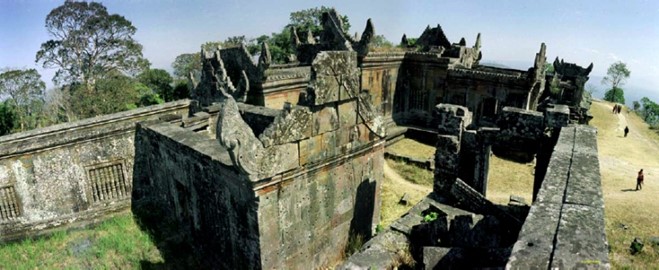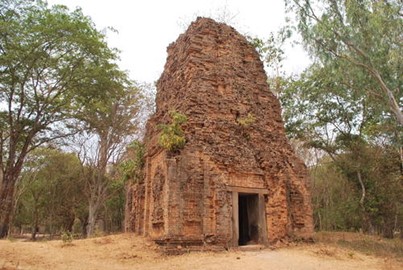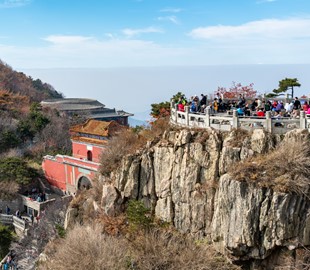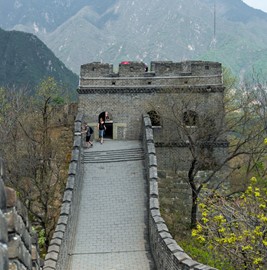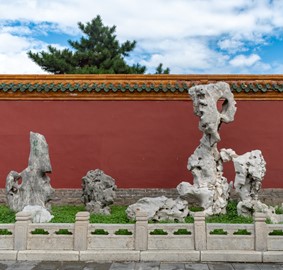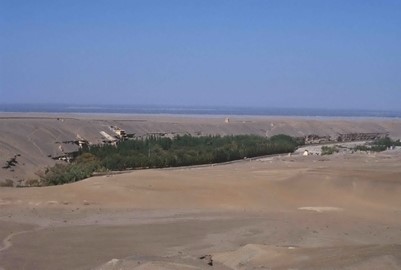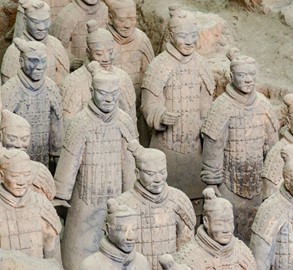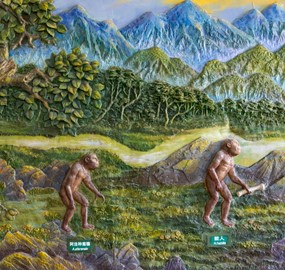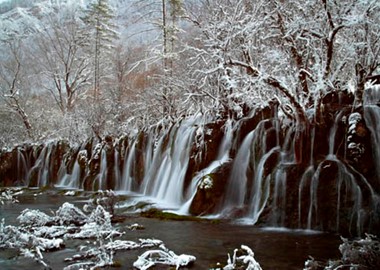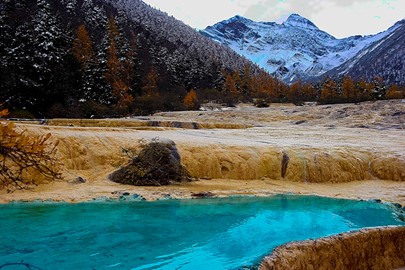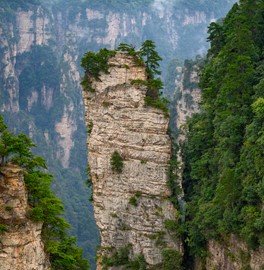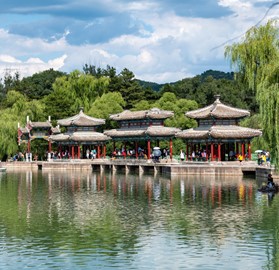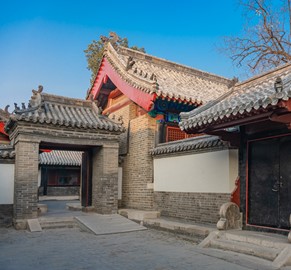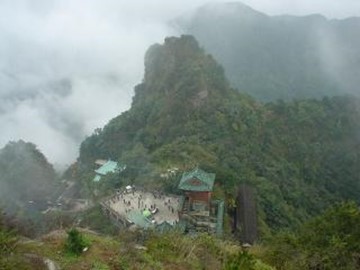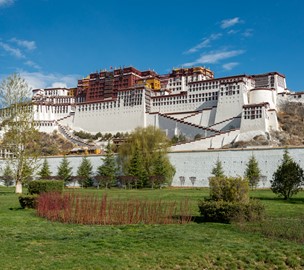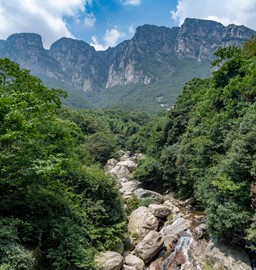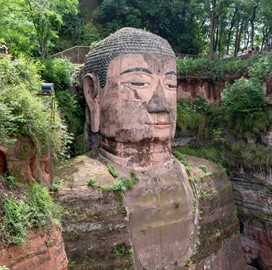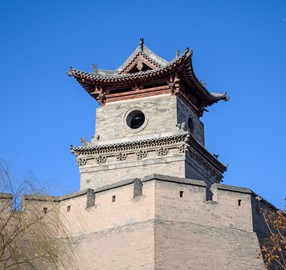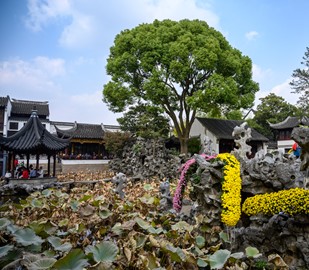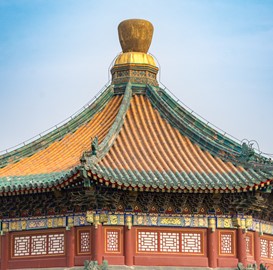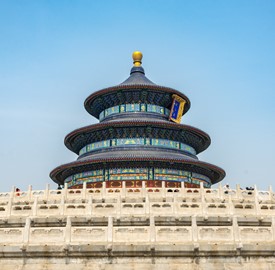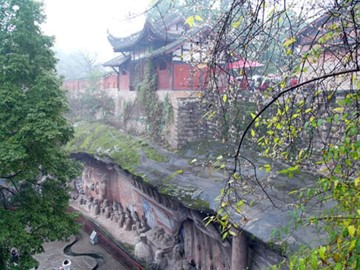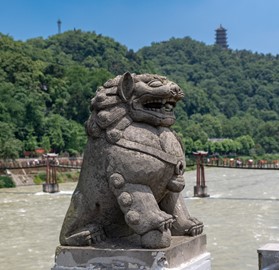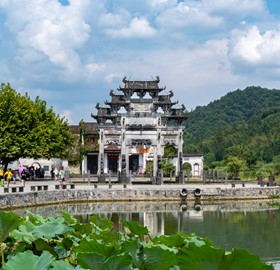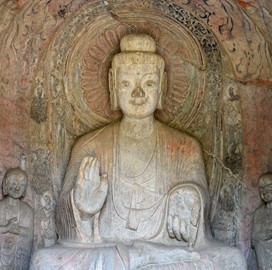region :: asia and the pacific
Preah Vihear
The Temple of Preah Vihear, a UNESCO World Heritage site in Cambodia, is an 11th-century Khmer masterpiece perched atop a cliff, dedicated to the Hindu god Shiva. Renowned for its stunning architecture and intricate carvings, it reflects the spiritual and artistic zenith of the Khmer Empire. Recognized for its cultural and historical value, it stands as a striking symbol of ancient devotion and engineering prowess.
Sambor Prei Kuk
Sambor Prei Kuk, a UNESCO World Heritage site in Cambodia, is a 7th-century archaeological treasure from the pre-Angkorian Chenla Kingdom. This ancient capital features over 100 well-preserved brick temples adorned with intricate carvings, set amidst a forested landscape, showcasing early Khmer architectural innovation. Recognized for its historical and cultural significance, it offers a glimpse into the region’s early urban and religious development.
Mount Taishan
Mount Taishan, a UNESCO World Heritage site in China, is a sacred peak revered for over 3,000 years as a site of imperial worship and cultural significance. Its rugged slopes, dotted with ancient temples, stone inscriptions, and stairways, reflect its role as a spiritual and artistic hub in Chinese history. Recognized for its natural and cultural value, it stands as a symbol of harmony between humanity and nature.
Great Wall
The Great Wall, a UNESCO World Heritage site in China, is an iconic fortification stretching thousands of kilometers, built from the 7th century BCE to the 16th century. Designed to protect against invasions, its watchtowers, battlements, and stone-and-brick construction showcase ancient Chinese engineering and military strategy. Recognized for its historical and architectural significance, it stands as a monumental symbol of resilience and ingenuity.
Imperial Palaces
The Imperial Palaces, a UNESCO World Heritage site in China, encompass the Forbidden City and Mukden Palace, grand residences of the Ming and Qing dynasties from the 14th to 20th centuries. These sprawling complexes, with their ornate halls, courtyards, and intricate designs, reflect imperial power, Confucian ideals, and architectural mastery. Recognized for their historical and cultural significance, they stand as enduring symbols of China’s dynastic legacy.
Mogao Caves
The Mogao Caves, a UNESCO World Heritage site in China, are a network of 492 Buddhist cave temples carved into a desert cliff from the 4th to 14th centuries. Adorned with vibrant murals and intricate statues, they represent a millennium of art, religion, and cultural exchange along the Silk Road. Recognized for their historical and artistic value, they stand as a treasure of ancient Buddhist heritage.
Mausoleum of the First Qin Emperor
The Mausoleum of the First Qin Emperor, a UNESCO World Heritage site in China, is a vast 3rd-century BCE burial complex famed for its Terracotta Army. This underground marvel, with thousands of life-sized clay soldiers, horses, and chariots, reflects the emperor’s quest for immortality and ancient Chinese craftsmanship. Recognized for its historical and archaeological significance, it stands as a monumental testament to imperial ambition.
Peking Man
Peking Man, a UNESCO World Heritage site in China, is an archaeological site preserving fossils of Homo erectus from 700,000 to 200,000 years ago. Discovered in a cave system, these remains, alongside stone tools and evidence of fire use, offer crucial insights into early human evolution in East Asia. Recognized for its scientific significance, it stands as a key record of prehistoric life.
Jiuzhaigou Valley
Jiuzhaigou Valley, a UNESCO World Heritage site in China, is a pristine natural wonder renowned for its vibrant turquoise lakes, cascading waterfalls, and snow-capped peaks. This biodiverse haven, home to rare species like the giant panda, showcases stunning karst landscapes and crystal-clear waters shaped by glacial activity. Recognized for its ecological and scenic value, it stands as a breathtaking testament to nature’s beauty.
Huanglong
Huanglong, a UNESCO World Heritage site in China, is a stunning karst landscape famed for its colorful travertine pools, terraced waterfalls, and alpine forests. Nestled beneath snow-capped peaks, this pristine site supports diverse wildlife, including the endangered Sichuan golden monkey. Recognized for its natural beauty and ecological significance, it stands as a vibrant showcase of geological splendor.
Wulingyuan
Wulingyuan, a UNESCO World Heritage site in China, is renowned for its breathtaking natural beauty, featuring over 3,000 quartzite sandstone pillars and peaks, many rising dramatically above lush valleys and streams. This geological wonder, formed over millions of years, includes misty cliffs, deep ravines, and cascading waterfalls, complemented by diverse flora and fauna. Its unique landscape has inspired cultural works, including traditional Chinese art and modern films, making it a globally celebrated de... Read More
Mountain Resort, Chengde
The Mountain Resort, a UNESCO World Heritage site in China, is a remarkable imperial retreat known for its harmonious blend of natural landscapes and traditional architecture. Constructed as a summer escape for Qing dynasty emperors, it features elegant palaces, pavilions, and temples set amidst rolling hills, serene lakes, and manicured gardens. This expansive complex showcases intricate design and cultural significance, reflecting the grandeur and sophistication of imperial China while offering a tranquil... Read More
Temple of Confucius in Qufu
The Temple of Confucius, a UNESCO World Heritage site in China, is a historic complex dedicated to the revered philosopher Confucius, embodying centuries of cultural and spiritual significance. Originally built in 478 BCE and expanded over time, it features grand halls, ancient steles, and ornate courtyards that reflect traditional Chinese architectural mastery. As a center for Confucian worship and education, it preserves rituals, artifacts, and teachings, drawing scholars and visitors to honor one of hist... Read More
Wudang Mountains
The Wudang Mountains, a UNESCO World Heritage site in China, are a sacred range celebrated for their Taoist heritage and stunning natural beauty. Home to ancient temples, monasteries, and palaces perched atop rugged peaks, the site reflects centuries of spiritual practice and architectural ingenuity. Renowned as the birthplace of Tai Chi, its misty slopes and lush forests create a serene backdrop, attracting pilgrims and martial arts enthusiasts alike to this harmonious blend of culture and nature.
Potala Palace
The Potala Palace, a UNESCO World Heritage site in China, is an iconic fortress and former residence of the Dalai Lamas, symbolizing Tibetan Buddhism’s rich history. Perched atop a hill, this architectural marvel features towering white and red walls, intricate murals, and sacred chapels filled with ancient relics. Built in the 7th century and expanded over time, it blends spiritual significance with stunning design, offering a glimpse into centuries of cultural and political heritage.
Mount Lushan
Lushan National Park, a UNESCO World Heritage site in China, is a scenic retreat famed for its lush mountains, misty peaks, and cascading waterfalls. A historic summer haven for scholars and elites, it features ancient villas, temples, and poetic landscapes that inspired centuries of Chinese literature and art. Its unique blend of natural splendor and cultural legacy makes it a cherished destination for reflection and exploration.
Mount Emei
The Mount Emei Scenic Area, a UNESCO World Heritage site in China, is a sacred Buddhist mountain renowned for its towering peaks, ancient temples, and diverse ecosystems. Crowned by the Golden Summit, it offers breathtaking views and spiritual significance, drawing pilgrims to its historic monasteries. With lush forests, rare wildlife, and misty trails, this natural and cultural treasure exemplifies harmony between humanity and nature.
Ping Yao
The Ancient City of Ping Yao, a UNESCO World Heritage site in China, is a well-preserved walled city showcasing Ming and Qing dynasty architecture. Its cobblestone streets, traditional courtyard homes, and towering city walls reflect a thriving historical trading hub once central to China’s economy. With ancient banks, shops, and temples still intact, it offers a vivid snapshot of imperial urban life and cultural heritage.
Classical Gardens of Suzhou
The Classical Gardens of Suzhou, a UNESCO World Heritage site in China, are masterpieces of traditional Chinese landscaping, blending art, nature, and architecture. Designed by scholars centuries ago, these serene gardens feature elegant pavilions, winding paths, and tranquil ponds adorned with rockeries and ancient trees. Reflecting philosophical ideals of harmony, they offer a timeless escape and a window into China’s refined cultural past.
Summer Palace
The Summer Palace, a UNESCO World Heritage site in China, is a majestic imperial retreat renowned for its sprawling gardens, serene lake, and ornate architecture. Built as a summer escape for Qing dynasty emperors, it features grand palaces, temples, and a iconic marble boat, harmonizing natural beauty with human craftsmanship. This historic site exemplifies traditional Chinese aesthetics and offers a glimpse into royal leisure and legacy.
Temple of Heaven
The Temple of Heaven, a UNESCO World Heritage site in China, is a stunning architectural complex where Ming and Qing emperors prayed for bountiful harvests. Its centerpiece, the circular Hall of Prayer for Good Harvests, features intricate wooden design and vibrant colors, symbolizing the connection between heaven and earth. Set within a tranquil park, this sacred site reflects ancient Chinese cosmology and imperial reverence for nature’s cycles.
Dazu Rock Carvings
The Dazu Rock Carvings, a UNESCO World Heritage site in China, are a remarkable collection of ancient stone sculptures etched into cliffs, blending Buddhist, Taoist, and Confucian themes. Created between the 9th and 13th centuries, these intricate reliefs depict deities, historical figures, and daily life with exceptional artistry. Preserved in their natural setting, they offer a profound glimpse into China’s spiritual and cultural evolution.
Mount Qingcheng and the Dujiangyan
Mount Qingcheng and the Dujiangyan, a UNESCO World Heritage site in China, combine a sacred Taoist mountain with an ancient irrigation marvel. Mount Qingcheng’s lush peaks host historic temples, reflecting its status as a cradle of Taoism, while the Dujiangyan system, built over 2,000 years ago, showcases ingenious engineering that tamed floods and irrigated fields. Together, they represent a harmonious blend of nature, spirituality, and human innovation.
Xidi and Hongcun
Xidi and Hongcun, a UNESCO World Heritage site in China, are ancient villages renowned for their well-preserved Ming and Qing dynasty architecture. Featuring narrow lanes, whitewashed walls, and ornate wooden carvings, these settlements reflect the prosperity of merchant families. With serene ponds and surrounding hills, they offer a picturesque window into traditional Chinese rural life and cultural heritage.
Longmen Grottoes
The Longmen Grottoes, a UNESCO World Heritage site in China, are an extraordinary collection of Buddhist rock carvings etched into cliffs along a riverbank. Created between the 5th and 10th centuries, these thousands of statues and caves showcase intricate sculptures of deities and emperors, reflecting the peak of ancient Chinese artistry. This sacred site offers a profound testament to Buddhist devotion and cultural achievement.
